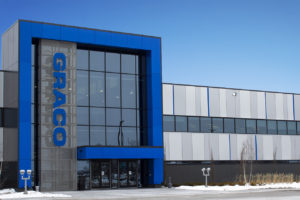Does Your Interior Design, Wayfinding Plan and Signage Solution Take the Audience into Consideration?

In the last 10 years, conference halls and hotels have made tremendous strides in making their interior spaces more inviting to meeting planners and attendees. They’ve installed extensive WiFi networks throughout their facilities; upgraded their catering menus; beefed up their technology offerings, providing everything from large projection screens to sophisticated lighting systems, advanced sound systems to laptop projectors; embraced “sustainable design” and materials; and in most cases even upgraded to dynamic or interactive digital signage.
Yet anyone who’s attended a conference knows that modern meeting spaces still leave much to be desired, particularly from the user’s standpoint. Although many hotels and convention centers are brand-new and provide a number of dazzling modern amenities (self-service check-in kiosks and guestroom electronics packages, anyone?), the lingering recession has forced many developers and builders to focus on more cost-effective ways to rejuvenate aging facilities. Hotels are thus turning more to renovations rather than new construction, but are the “facelifts” doing enough to meet the changing needs of today’s over-scheduled, travel-weary attendees?
In order to succeed in the highly competitive meetings and hospitality industries, facilities must place the end-user squarely in the center of its design and construction/renovation plans. Critical questions to ask during the renovation and design stages include:
A Wayfinding Plan Designed for the Visitor
Does the facility’s wayfinding take into consideration how a visitor might navigate its hallways, entryways, parking lots and garages, and lobbies? Oftentimes, wayfinding becomes an afterthought in the design and construction of a hotel or meeting facility, resulting in a haphazard collection of unrelated signage. Wayfinding experts not only know how to design and arrange appropriate signage that maximizes a visitor’s experience, they can also provide professional and skillful consultation on everything from lighting to architectural elements that can enhance wayfinding and navigation.
Generational Shift
Does the facility understand the changing demographics of today’s meeting attendees? As baby boomers age and retire, Generation Y enter the managerial and executive ranks, and Millenials launch their careers, meeting planners will need to incorporate technologies and amenities that younger attendees have come to expect and demand. Forward-thinking meeting experts already understand the importance of social media and “virtual meetings.” What many fail to understand, however, is how to integrate them into the musty traditions of conferences and trade shows. Remember the underwhelming “Twitter Wall” displayed in the exhibit halls of IBC 2010 in Amsterdam? In addition, meeting planners must be prepared to address how the explosion in handheld, Internet-enabled smartphones and tablets will affect the way attendees interact and receive information during a conference.
Up-to-the-Minute Information & Digital Signage
Does the facility use digital signage to its fullest advantage? Digital signage has transformed modern commercial facilities, as they’re used for everything from wayfinding and navigation to streaming cutting-edge advertising campaigns. Meeting planners can work with facility managers to stream custom messaging to conference and trade show attendees, providing critical information such as workshop schedules, maps, industry-specific news, registration details, and even live streams of concurrent sessions. Interactive technologies can also be deployed that will further enhance attendee experience, from registration to polling to mobile “check-ins.” These and other creative uses of digital signage and kiosks can personalize a user’s experience, encourage them to interact with their fellow attendees, and “brand” a conference.
Ergonomics and Comfort for Learning
Does have the facility offer the learning-centered environment that meeting planners and attendees crave but not often encounter? What type of seating does it provide? Are the chairs and tables ergonomic and comfortable? Is the lighting bright without being harsh? Are there a lot of shadows in the rooms and hallways? Has the carpeting been updated since 1982? Conferences and trade shows can be overwhelming, but smart planning and design can go a long way towards ensuring that attendees experience them as enjoyable and exciting opportunities to learn, network with colleagues, connect with old and new friends, and be inspired.

